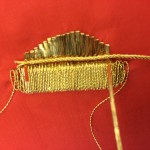“Up to the present time, dating from the end of the eighteenth century, gold embroidery has been almost exclusively confined to those who made it a profession; amateurs have seldom attempted what, it was commonly supposed, required an apprenticeship of nine years to attain any proficiency in.” (Thérèse de Dillmont, 1886)
–
Preparations for embroidery with metal threads: preparing the pattern blueprint, puncturing the pattern on paper. Transferring the pattern onto the silk using the historic technique of spreading chalk powder through the punctured paper. Fixing the silk on a support fabric on an embroidery frame.
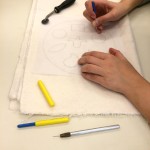
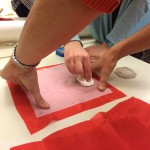
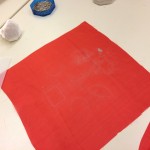
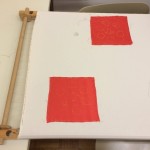
preparing thread loops; and professional examples
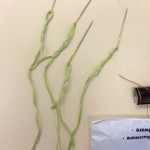
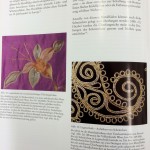
Surface Couching (de: Legetechnik) of Japan Gold (de: Japangold): gold coated paper around a thread core. The thread is laid and couched in pairs, couching thread is in a similar colour. The couching threads are offset so that they do not cause “bumps” in the end design.
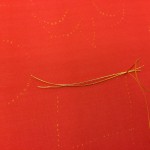
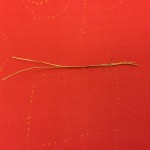
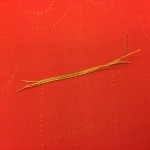
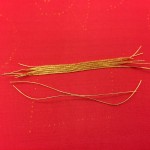
Underside Couching (de: Versenkte Legetechnik) is a similar method, except the couching thread is pulled tight, causing a small loop of the laid thread to pull through to the underside of the fabric.

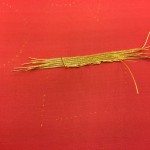
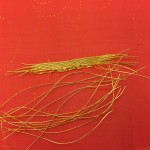
Or Nué, Shaded Couching (de: Schattierte Legetechnik), a different coloured thread is used to produce shading on top of the metal threads.

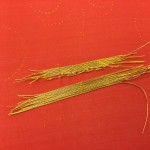
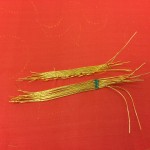
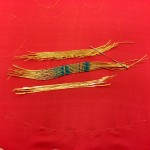
Couching of metal strips (de: Plasch oder Lahn)
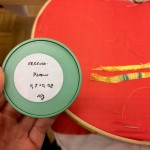

Finishing: pulling ends of thread to the back
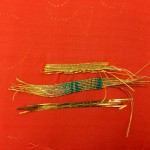
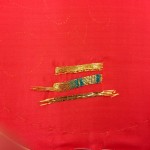
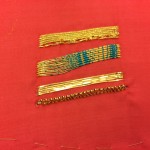
Passing Thread Technique (de: Stechtechnik): The only gold embroidery technique, where the metal thread is actually pulled with a needles through the fabric.
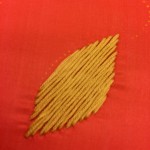
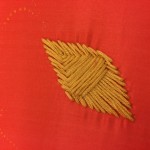
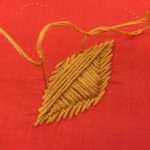
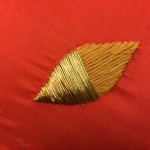
Wire Bullions are very fine wire threads wound into a tubular shape. They are defined by different colours (gold, silver) and shapes.
Cutwork with Wire Bouillon (smooth surface and is matte in appearance)
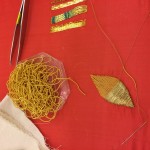
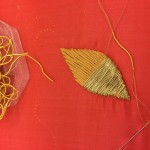
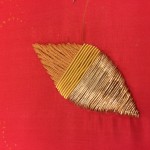
Bright Check Bouillon (has a faceted (zig-zag) surface and is shiny)
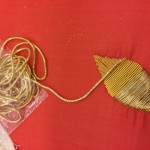
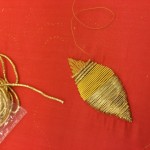
Bright Bouillon ( has a smooth surface and is shiny in appearance). Here, two different sizes of silver Bright Bullion are applied.
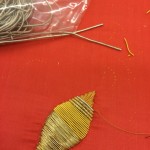
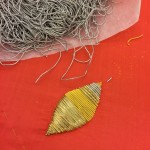
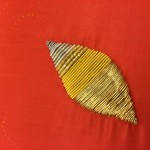
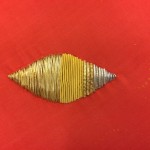
Chipping: bead-like cut out metal chips, here from Bouillon Thread, which are sewn in random clusters to create texture
(de: Sandstich)
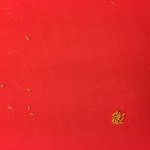
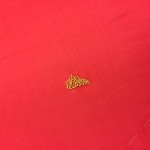
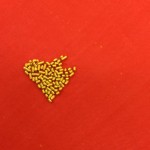
Sprengtechnik with a Cordonet String (de: Sprengtechnik)
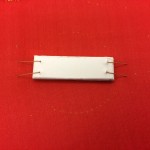
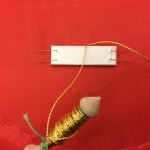
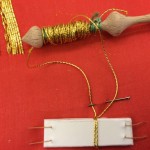
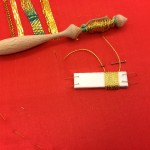
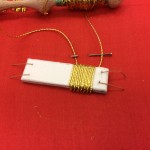
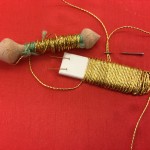
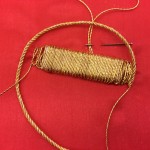
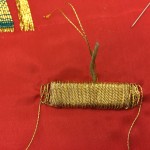
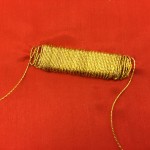
Sprengtechnik with metal strips (Plasch)
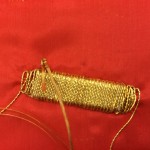
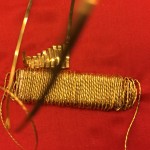
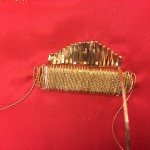
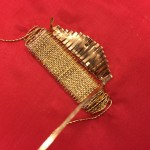
–
Fürnkranz, Sophie. Metallstickerei im Außereuropäischen Raum. In: Kunsthistorisches Museum mit Museum für Völkerkunde und Österreichischem Theatermuseum (Hrsg.) Technologische Studien/ Kunsthistorisches Museum: Konservierung – Restaurierung – Forschung – Technologie. Band 2. Wien: Kunsthistorisches Museum, 2005
de Dillmont, Thérèse. Encyclopedia of Needlework. 2007 Link
Translated from: de Dillmont, Thérèse. Encyclopédie des ouvrages des dames. Dornach, Alsace: 1886
–
